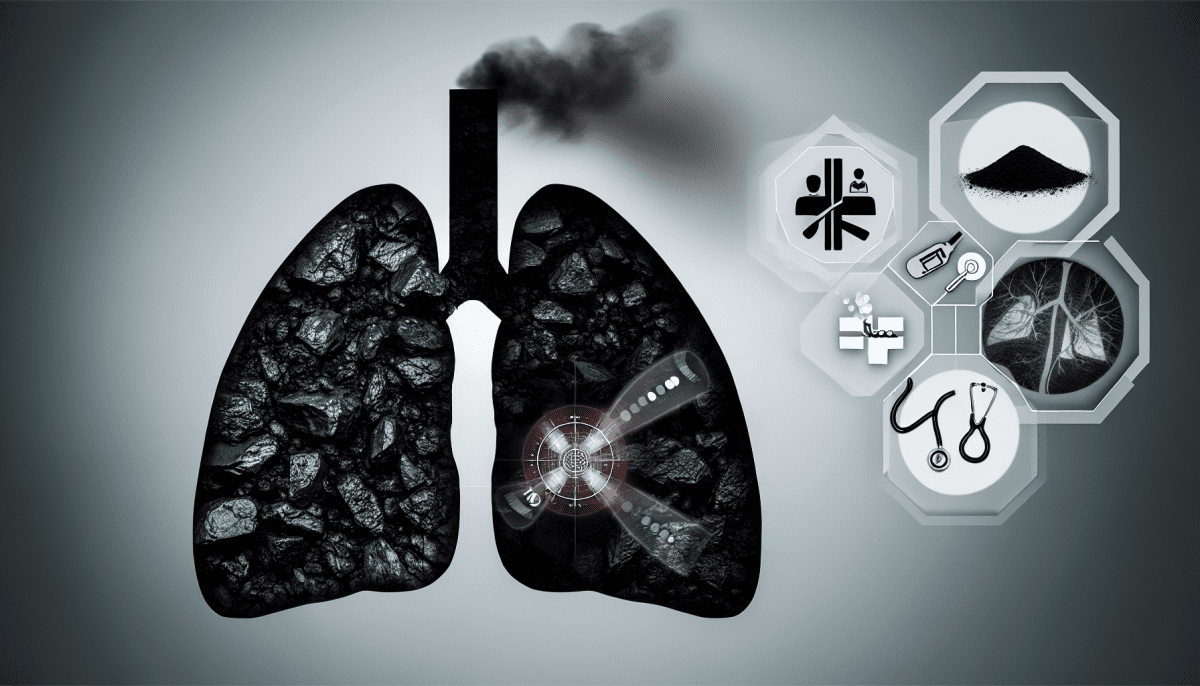So, what is black lung? It primarily affects coal miners, but it can also impact workers in industries that expose them to similar particulate matter. Symptoms of black lung disease can vary, but common signs include a persistent cough, shortness of breath, and chest pain. These symptoms may worsen over time, significantly affecting a person's quality of life, making it difficult to perform everyday tasks.
Preventing black lung disease involves strict adherence to safety regulations in mining and related industries. Employers are encouraged to implement measures to reduce dust levels, such as using water sprays and proper ventilation systems. Regular health check-ups for workers are crucial to catch any early signs of the disease, which can be vital for managing symptoms and improving treatment outcomes.
If a worker is diagnosed with black lung, various treatment options are available. While there is currently no cure, treatments aim to alleviate symptoms and improve lung function. Options may include medications, oxygen therapy, and pulmonary rehabilitation programs. By understanding what is black lung and the importance of early detection, we can better support those affected by this serious condition.
Symptoms and Diagnosis of Black Lung
Black lung, also known as pneumoconiosis, is a serious condition that affects coal miners and others exposed to coal dust. Understanding the symptoms and diagnosis of black lung is crucial for early intervention and treatment. The symptoms can often be subtle at first, gradually worsening over time. Common signs include persistent coughing, difficulty breathing, and a feeling of tightness in the chest. Many sufferers might initially attribute these symptoms to normal fatigue or aging, but it's essential to recognize that they can indicate a worsening condition.
As the disease progresses, individuals may experience more severe symptoms, such as chronic bronchitis or emphysema-like symptoms. Wheezing, persistent chest pain, and increased mucus production can also occur. In advanced stages, black lung can lead to respiratory failure, significantly impacting quality of life. Therefore, if you or someone you know has a history of coal dust exposure and begins to show these symptoms, seeking medical advice promptly is vital.
Diagnosis of black lung typically involves a combination of patient history, physical examinations, and imaging tests. Healthcare providers often start by asking about occupational history to assess exposure to coal dust. A chest X-ray or CT scan can help identify characteristic patterns in the lungs that indicate the presence of coal worker’s pneumoconiosis. Pulmonary function tests may also be conducted to measure how well the lungs are working. All these steps play an essential role in answering the question, what is black lung, and understanding its impact on health.
Treatment Options for Black Lung
When it comes to understanding what is black lung, it's essential to know the treatment options available for those affected by this serious condition. Black lung, or pneumoconiosis, is an illness caused by prolonged exposure to coal dust. Fortunately, there are various treatments to help manage symptoms and improve the quality of life for individuals diagnosed with this disease.
One of the primary treatment options for black lung is the use of bronchodilators. These medications help open up the airways, making it easier for patients to breathe. In some cases, doctors may prescribe corticosteroids to reduce inflammation in the lungs. Patients are encouraged to follow their healthcare provider's recommendations for these medications to achieve the best results.
In addition to medications, oxygen therapy is often recommended for individuals with severe black lung. This treatment involves using a machine to deliver extra oxygen to the lungs, helping to relieve shortness of breath. Pulmonary rehabilitation is another valuable option, combining exercise, education, and support to assist individuals in managing their condition more effectively.
For those facing significant respiratory issues due to black lung, surgical interventions may be considered. Procedures like lung volume reduction surgery can help remove damaged lung tissue, allowing healthier parts of the lung to function more effectively. It’s essential for patients to discuss their treatment options with healthcare providers to tailor a plan that suits their specific needs.
Prevention Tips for Avoiding Black Lung
Preventing black lung disease is crucial for anyone working in coal mining or related industries. To understand how to stay safe, it’s helpful to first know what is black lung. This condition, also known as coal workers' pneumoconiosis, occurs when inhaled coal dust accumulates in the lungs, causing serious respiratory issues over time. Here are some essential prevention tips to help avoid this dangerous illness.
First and foremost, proper ventilation in the workplace is vital. Ensuring that work areas are well-ventilated significantly reduces the amount of coal dust in the air. Employers should regularly monitor air quality and implement engineering controls, such as dust collection systems, to minimize dust exposure. Additionally, workers should wear appropriate personal protective equipment (PPE) like respirators that are designed to filter out harmful particles.
Regular health check-ups are another key prevention strategy. Miners should have routine screenings to monitor lung health and detect any early signs of black lung disease. Early detection can lead to timely interventions and better management of the condition. Alongside health checks, promoting education and awareness about what is black lung and its risks among workers fosters a culture of safety and proactive health measures.
Finally, good hygiene practices play an essential role in prevention. Workers should wash their hands and faces after shifts to remove coal dust and avoid bringing it home. Keeping work clothing separate from regular clothing also helps prevent dust accumulation at home. By following these simple yet effective measures, individuals can better protect themselves from the risks associated with black lung disease.







